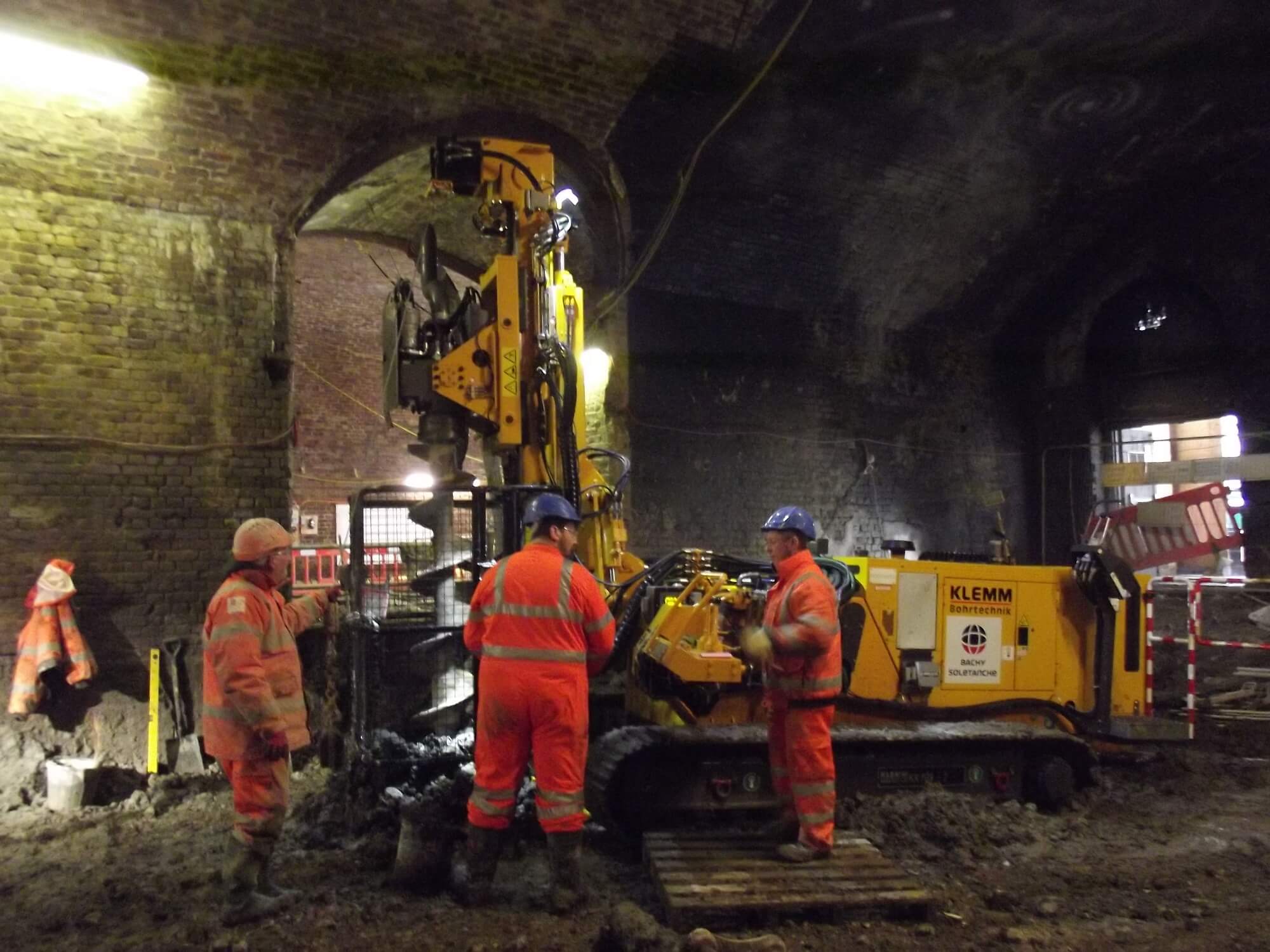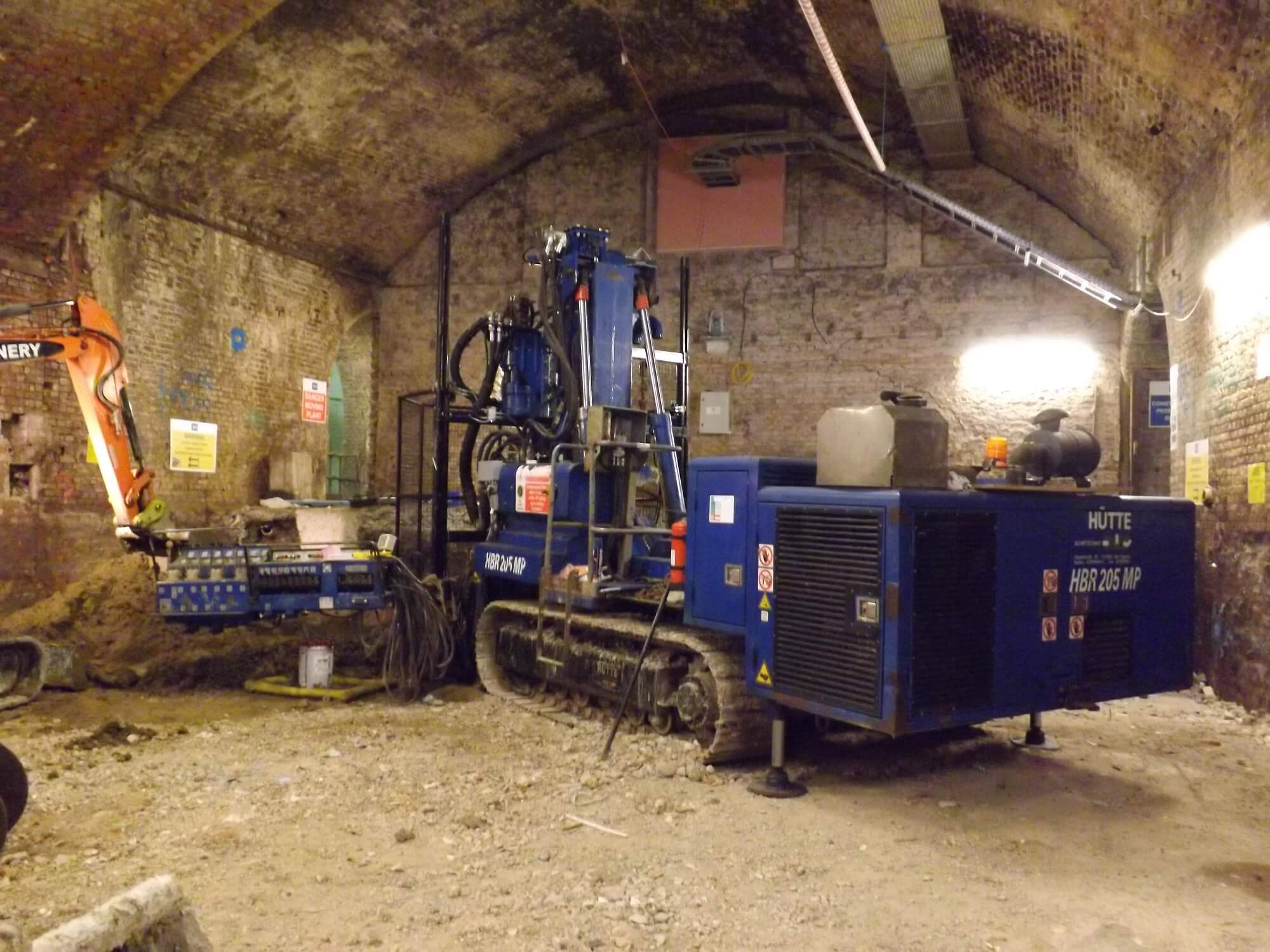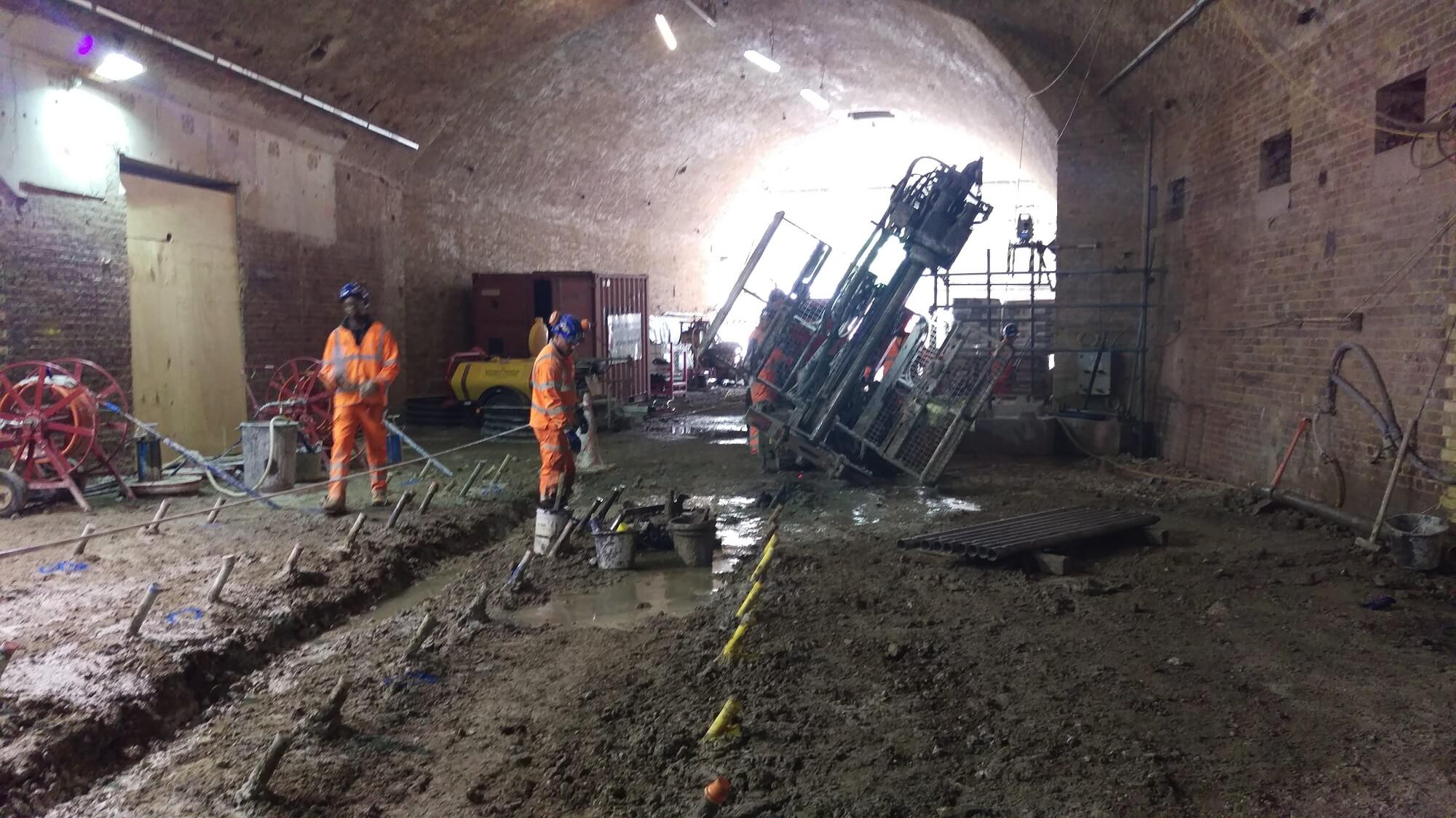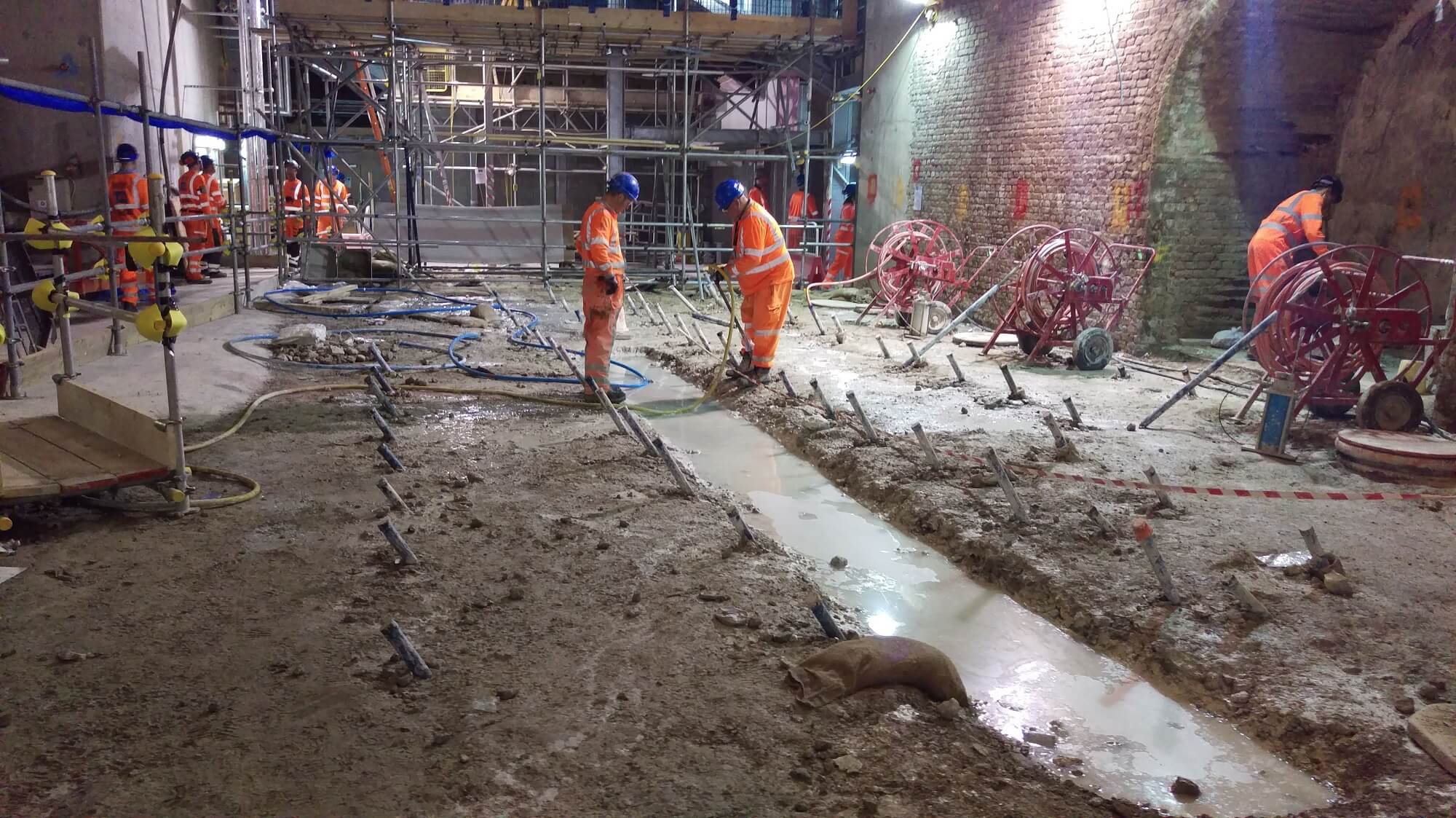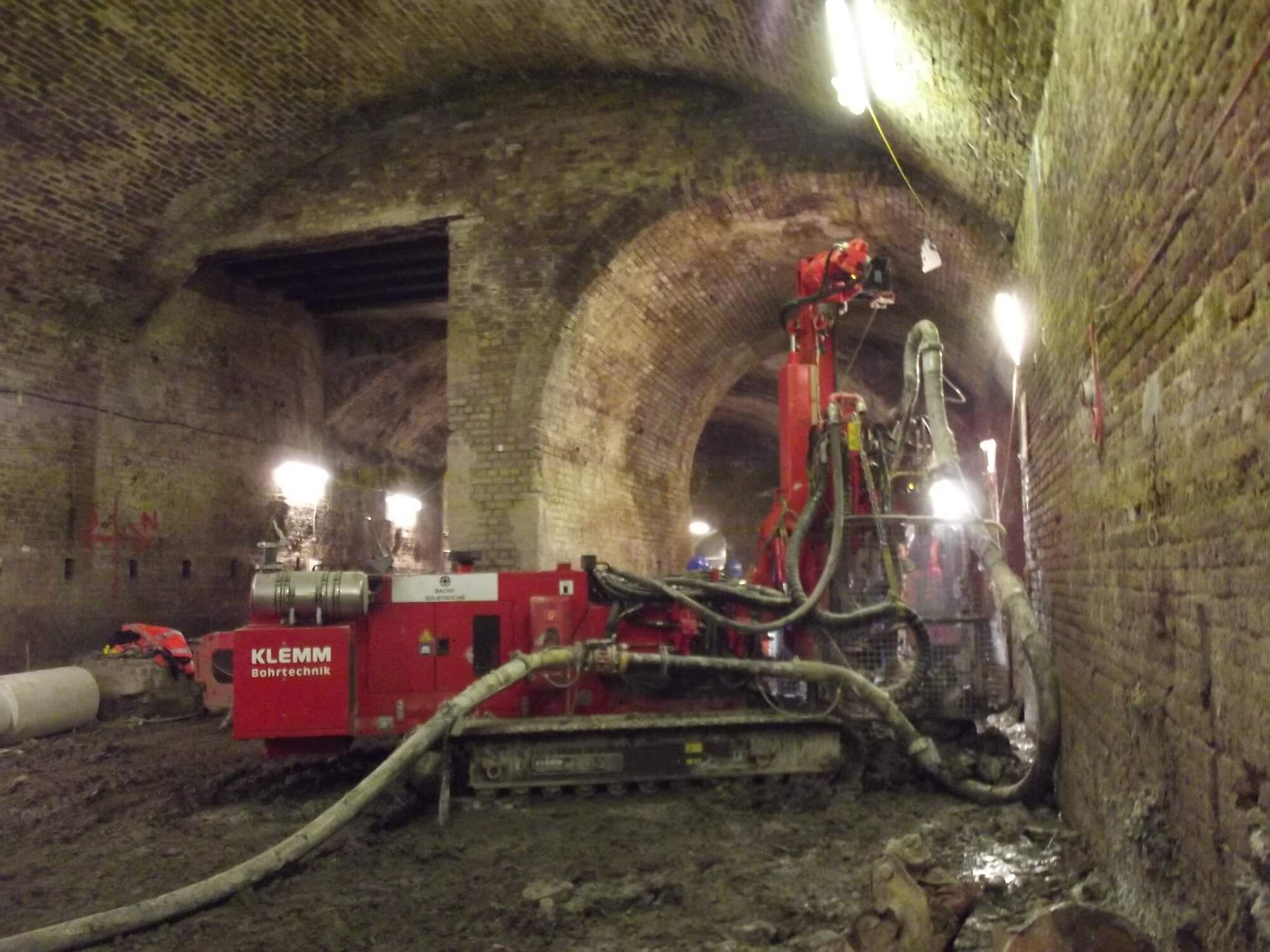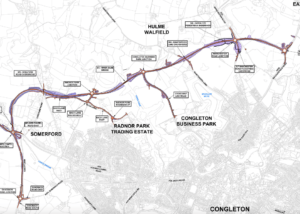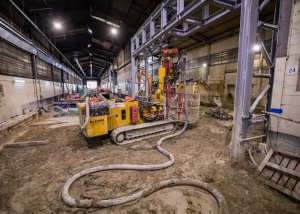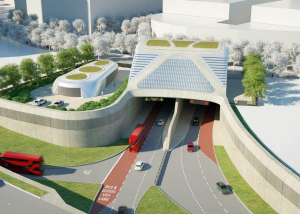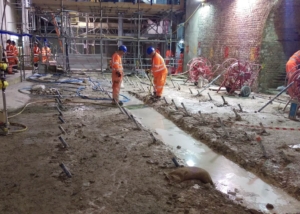PROJECT OVERVIEW
Bachy Soletanche undertook one of its most challenging contracts, when delivering the permeation grouting package for London Bridge Station redevelopment. The redevelopment programme transformed the station by creating new platforms for more trains, building a new concourse and creating a bigger, better station for passengers.
DESIGN AND PLANNING
Following the completion of pre-demolition piling and construction of the buttress wall, structural settlement continued once these works had been completed; this had resulted in a total settlement of the 200-year-old masonry arch, which supports the live railway, of circa 30mm with an annual rate of 10mm.
Due to the ongoing settlement significant additional ground investigations were undertaken over two phases to understand the material below the masonry arch footing and to install extensometers and piezometers into the ground below. Historically settlement in other parts of the project abated following the completion of works; Arch E929 settlement rates were not reducing and exceeded the acceptable limit.
Whilst following the observational approach to reviewing structural monitoring results within the area of settlement and the additional investigations it was decided that some form of ground treatment was required to stiffen a very loose stratum. A very loose deposit of sand had been proved toward one section of the buttress foundation with video footage of material showing it comprised of sand with some gravel with limited silt content.
A significant challenge in treated the loose gravels was both logistical and technical, access was limited to one side of the masonry footing which had a high restriction; this was combined with a treatment which could not create differential settlement rates to surround structures or increase load paths to the London Clay containing the Jubilee Line Tunnel Portal.
GROUTING OPERATIONS
TaM pipes were installed to facilitate the grouting of the granular strata between the underside of the arch and the top of the London Clay. The boreholes were drilled to the designed depth (up to 16m) which were then backfilled with a Cement:Bentonite sleeve grout into which the TaM pipes were placed. The sleeve grout was also used to fill, at low pressure, the larger interstices between RTD granules, and any localised voids at the foundation contact.
The TaM system allowed the injection of a project specific microfine grout through injection ports within the TaM pipe. Analysis of the injection records allowed the targeting and reinjection of particular open/lose areas of the sand and gravel stratum. The TaM injection grouting works were under full computerised control via the use of a grouting computer, and computer driven grout injection pumps, managed by an experienced grouting technician. The computer programme automatically pilots the injection pumps to follow pre-determined grouting instructions generated within the grouting software by placing limits on the parameters: injection pressure, injection flow rate and target volume per sleeve.
One of the key benefits of the permeation grouting was that it allowed the main project delivery works to be undertaken with minimal disturbance, whilst ensuring ongoing stability of the masonry arch above the treatment zone during the works. Although limited by headroom and access to the treatment zone the specialist equipment mobilised to install the TaMs allowed other works to be carried out in adjacent areas. As the drilling and grouting works were self-contained within the arch above the treatment zone other critical project works were not delayed as they may well have been if a more aggressive treatment has been selected.
A benefit of the permeation grouting scheme was that grout could be delivered to the treatment zone in a controlled manner taking account of the real time monitoring alarms.
Injection data was recorded, analysed and presented graphically for daily review by the team. This this data was reviewed by the team, together with that provided by the real time monitoring, to develop the dynamic response to the observed reaction of the structure. Although some small settlement was considered during the installation works, the works were completed with only very small amounts of heave being recorded by the structural monitoring.
Successful project delivery was reliant on the permeation grouting resolving the ongoing settlement issues within the arch whilst achieving the requirements to stiffen the loose granular material within the River Terrace Deposits, which was validated after six months of monitoring and grout volumes used reflecting calculated ones. Twelve months of monitoring post grouting identified no further movements.
